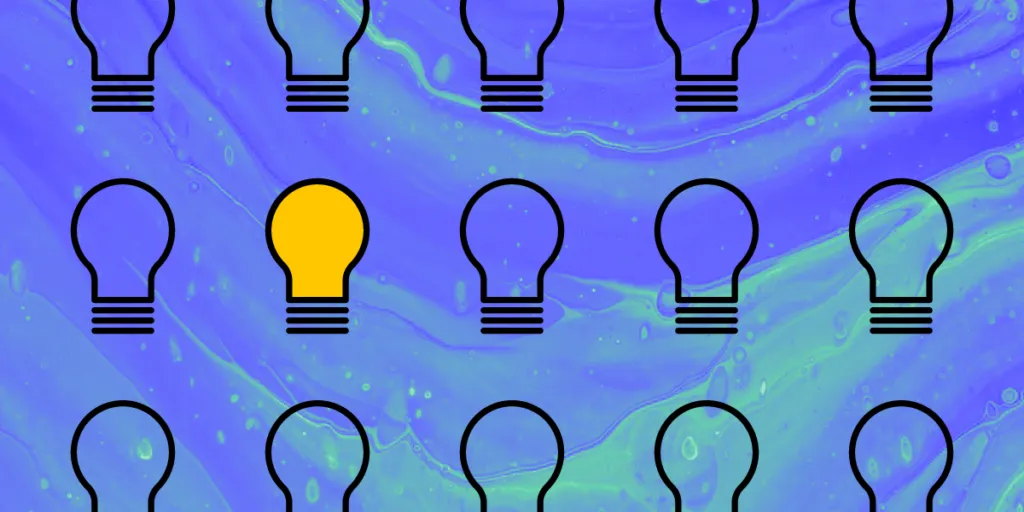Looking for Inspiration: Where to Get Ideas When You’re Experiencing a Designer’s Block

This is a guest post written by Shuffle.dev. Head on to their site to browse through the catalog of categorized UI components and get inspired. Let’s see what they say about eliminating writer’s block.
All of us have experienced designer’s block at some point. It’s not a pleasant place to be in, but don’t worry, you’re not the only one affected by it. Even the most creative designers and the most established people in the industry have been there. And they will most likely find themselves there more than once in the future.
In fact, you could even say that designer’s block is an integral part of the creative process. That’s why you need to approach it with reason. A temporary interruption in the supply of ideas does not mean that you have stopped being creative. It means that your mind is working, but looking for new ideas.
How to Overcome Designer’s Block and Get the Creative Juices Going
There are a bunch of ways to look for breakthroughs and each one is good as long as it works. However, we don’t all respond to them in the same way, so we have another idea for you to deal with your block.
1. Move Around a Bit
Sounds absurdly simple, but who among us hasn’t forgotten to do this when working long hours at the computer? This is the easiest and most intuitive way to deal with designer’s block. Take a walk, do a series of squats and bends, anything that makes you break out of your environment. Your mind literally works differently when you walk, and we have the research to prove it!
source: https://unsplash.com/photos/JxSLigoB-6A
2. Try New Things
Let’s not kid ourselves, not every moment is good for a walk or workout. The next classic way to deal with a designer’s block is to try new things. Try doing your task, but with a different type of tool than the last time you did it.
It might be starting from a different starting point. It might be a new plugin in your favorite editor. You might try assembling a collage of your project from just pre-made elements.
By working in a different way, you will achieve different results. This is another truism that we forget. So really try working in a different way and you’ll be surprised how it changes the end result.
3. Do Things Intentionally Wrong
Whether you’re at the beginning of a project or in the middle of it, designer’s block usually means you can’t find a good solution. But what if you know what won’t work? Try making a project consisting of solutions that don’t fit.
In doing such a project, you may experience a whole series of enlightenments about how it should look. You may also be surprised to find that seemingly bad ideas in the process turn out to be pretty good after a small series of tweaks.
And once you have a version, you can always improve it. Such evolutionary work is often easier than starting with the one and only right idea.
4. Get Inspired
Yes, I know, you’ve tried. But we have a unique set of inspirations for you. Whether a designer’s block happened at the beginning of a project (which is predictable), or you’ve locked yourself in the middle on a particular element – a catalog of over 3900 components, divided into categories and style libraries will help you to find a new approach.
Don’t have an idea for a footer? Here are 150 different footer examples!
Additionally, if your developer tells you that it can’t be done and something can’t look exactly like that, you have good arguments to convince him that he is wrong. All the examples you’ll find in Shuffle have ready-made code under them, so you can even show him how to do it by showing him Tailwind Components, or in another framework.
A Few Words About Where the Designer’s Block Can Come From
We can be afraid of specific actions, because we know that if they don’t succeed, some things won’t happen in life. If you don’t like the project, you will have to do it from scratch, which involves additional work time or delaying other projects.
In my experience, it is more common that we are afraid to fail because we can’t handle the unknown. Fear of failure does not mean fear of its consequences, which are tangible. Being late with a deadline is disruptive, but it happens to everyone. Scarier is the sheer uncertainty of what will happen when we fail to get something done.
Read an article on how to deal with fear of failure: “if you are particularly anxious about failing, it’s the uncertainty about whether you will do so that bothers you more than the actual consequences”
For my part, I would say that it’s good to remind yourself that a deadline is just a social construct. Internalizing the idea that “better done than perfect” also helps fight the downtime of working to prove the next project. Every roadblock eventually passes :)

